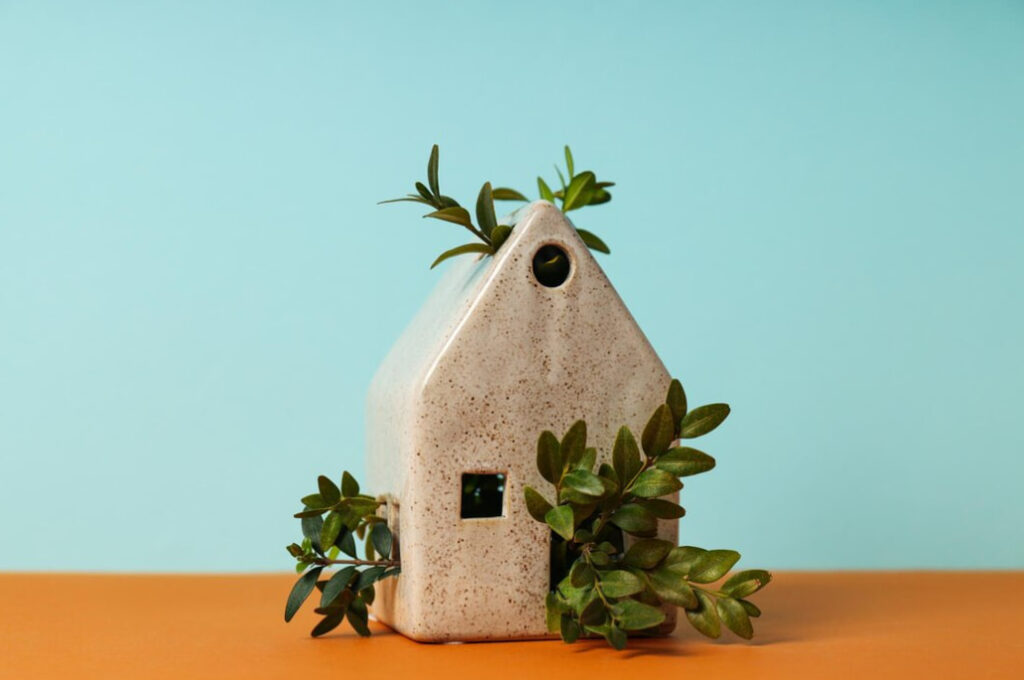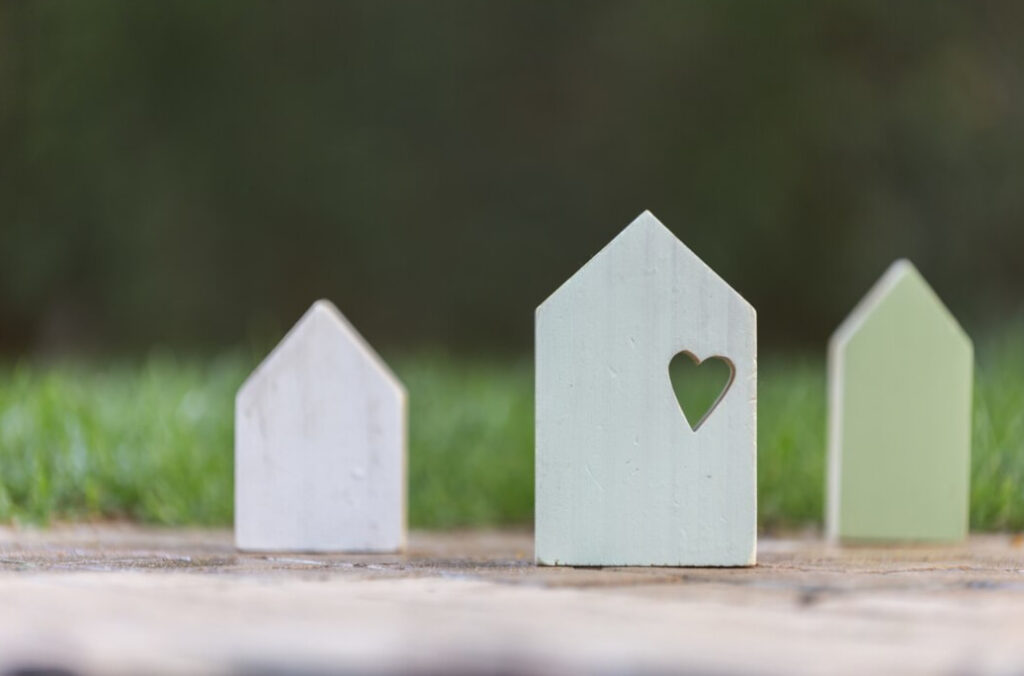As the world becomes more environmentally aware, homeowners and architects are embracing sustainability in their designs. Eco-conscious homes are not just a passing trend; they represent a crucial step toward reducing our environmental impact and promoting a healthier planet. Here we showcase 10 homes that exemplify this commitment to eco-friendliness through innovative design and green practices.
Eco-Conscious Living: India’s Green Homes Movement
The trend of Eco-Friendly Living in India is gaining momentum, reflecting a burgeoning commitment to environmental stewardship. A growing segment of the population is gravitating toward sustainability, often initiating this shift by constructing eco-friendly dwellings.
Analyzing Google Trends, we observe that Karnataka leads the nation with the highest frequency of searches for “Eco-Friendly House,” indicating a concentrated interest in sustainable living within the state. However, this enthusiasm is not uniformly distributed across India, suggesting significant room for growth in national awareness and adoption.
The mantra ‘Live A Sustainable Life’ has become increasingly common, emblematic of a profound transformation in the collective mindset. Society is transitioning toward a future-focused outlook, characterized by a heightened consciousness of environmental necessities and an individual’s role in ecological conservation.
Amidst environmental upheavals, symbolized by the escalating carbon footprints, there’s a silver lining as a segment of the Indian populace is actively adopting corrective measures and forging a path of sustainability. Lifestyle alterations and the pursuit of eco-conscious home design are becoming prevalent as more individuals commit to reducing their ecological impact, aiming to harmonize their living spaces with nature’s delicate balance.
Top 10 Leading Sustainable Home Designs
Presenting 10 eco-conscious homes in India, showcasing impactful sustainable designs crafted with a keen awareness of prioritizing the well-being of the planet.
| Residence Name | Location |
|---|---|
| Hombelaku Residence | Bangalore |
| The Singh Residence | Bangalore |
| N R House | Hyderabad |
| Farmers Home | Dakivali |
| Hosamane | Bangalore |
| Coconut Shells House | Mumbai |
| 100% Recyclable House | Haryana |
| Eco-Friendly House | Kerala |
| Laughing Waters in Bangalore | Bangalore |
| Kachra Mane | Bangalore |
Hombelaku Residence, Bangalore
In Bangalore’s Hombelaku residence, sustainable building practices are at the forefront, with clay and mud blocks substituting conventional bricks. This home is recognized as a benchmark in eco-friendly living, where walls are left bare of plaster and paint to minimize potential lead contamination. The floors are laid with unadorned Kota and clay tiles, endorsing simplicity and eco-consciousness. To curtail electricity consumption, solar water heaters and lamps are installed, while ample daylight is harnessed through expansive skylights within the home.
- The household segregates waste for efficient recycling, turning organic refuse into compost for the vegetable patch in the garden;
- An efficient rainwater harvesting system is in place to fulfill the family’s water requirements;
- Additionally, greywater from domestic chores is repurposed for washing vehicles and irrigating outdoor areas;
- The home’s construction cost stands at 15 percent less than conventional homes, thanks to the omission of plaster, paint, and cement in its design.
The Singh Residence, Bangalore
In the Singh household of Bangalore, sustainability takes root in their organic garden, nourished by vermicompost derived from the home’s wet waste. This home is a natural oasis, rarely requiring the use of its single fan due to the abundant greenery surrounding it and the natural light streaming in from towering 8-foot windows and overhead skylights. A naturally powered filtration system, involving no electricity and utilizing layers of gravel and sand, recycles kitchen wastewater. This reclaimed water is then used to sustain the garden’s lushness. Furthermore, a rainwater harvesting system supports the garden’s irrigation needs for nearly half the year, exemplifying the Singh’s commitment to an environmentally attuned lifestyle.
N R House, Hyderabad
At N R House, the aesthetic harmony of natural hues, the elegance of semi-precious stones, and the warmth of wooden elements throughout the residence underscore a deep-seated dedication to eco-friendly principles. This home stands as a testament to green living, with its rooftop transformed into a dual zone for organic horticulture and solar energy production.
- Embracing the terrain’s gifts, the home features locally sourced natural stone in its interior and exterior spaces, merging design with the natural world;
- The raw beauty of exposed concrete ceilings is accentuated with distinctive embedded patterns, adding a unique character to each room;
- Inside, the lavish use of marble, brass inlays, and subtle metallic touches lends a sophisticated touch, while hollow-core doors ensure a seamless flow of air and a gentle erasure of boundaries between indoor and outdoor living;
- The abode radiates tranquility, filled with elements shaped from the Earth, crafting a serene, almost Zen-like living experience.

Farmers Home, Dakivali
The 1,400-square-foot Farmer’s Home, set on a generous 5,000-square-foot plot, is a beacon of eco-innovation and sustainable living at an affordable cost. Its design philosophy is deeply rooted in environmental sensitivity, boasting features that respond intelligently to the local climate. This residence epitomizes the concept of budget-friendly, green architecture.
Inhabited by a farmer, his spouse, and their two children, this dwelling demonstrates that eco-consciousness doesn’t necessitate vast resources. With a strong commitment to localism, the materials for the home were all procured within a close-knit radius, minimizing the environmental footprint. The building materials such as bricks and fly ash jali blocks not only support the local economy but also affirm the residence’s bond with the region’s character. The interior decor maintains a raw, rustic charm, resonating with the spirit of the surrounding rural landscape.
Hosamane, Bangalore
Harnessing the sun’s bounty, Hosamane stands as an exemplary low-cost, eco-friendly habitat powered almost entirely by solar energy. The home’s commitment to sustainability extends to its water conservation practices, having implemented a rainwater harvesting system that has been effectively running for the past two years.
- In this green haven, greywater is not wasted but repurposed for irrigating the gardens and flushing toilets, maximizing resource efficiency;
- Moreover, the household embraces a zero-waste philosophy, where dry waste is recycled economically, and wet waste finds new life through composting, enriching the garden soil;
- Hosamane is a testament to how renewable energy and resource recycling can coalesce to create a self-sustaining home.
Coconut Shells House, Mumbai
The construction of this environmentally conscious and cost-effective dwelling harnessed the power of coconut shells. When integrated into the walls and roof, the natural hollow structure of coconut shells plays a pivotal role in maintaining the home’s naturally cool interior temperature.
- This innovative design lowers the temperature by approximately 4-5 degrees Celsius, rendering air coolers and air conditioners unnecessary;
- These appliances, notorious for their high water and energy consumption, are no longer a requisite.
100% Recyclable House, Haryana
The architect behind this project embarked on a mission to explore the potential of utilizing raw, untreated earth as a viable building material for a multi-story contemporary residence.
Crafted primarily from mud and bamboo, this house can withstand sweltering heat with ease. Moreover, it boasts a completely recyclable construction, complete with a living roof adorned with lush grass thriving on its surface.
Eco Friendly House, Kerala
- These remarkable homes employed a diverse array of materials, such as wood, bricks, tiles, and stones;
- What truly piqued curiosity was the astonishing speed of construction, as this substantial 12,000-square-foot dwelling came to life in less than three months, making it a truly captivating feat;
- Notably, the entire structure was crafted from reclaimed and waste materials, with bamboo forming the core framework.
This eco-conscious dwelling seamlessly integrates with its natural surroundings by utilizing recycled materials sourced from various sites where structures had been dismantled. These include repurposed beer bottles, reclaimed bricks, and doors salvaged from demolished buildings.
The house’s construction methods prioritize environmental sustainability, significantly reducing its overall carbon footprint. The rapid construction timeline, completing the house in less than a quarter of a year, adds an additional layer of intrigue to this remarkable eco-friendly project.
Laughing Waters in Bangalore
A unique synergy of talents has brought forth this remarkable structure, crafted jointly by a water conservationist and a community gardener. The result is a residence that demonstrates exceptionally judicious water management, allowing its residents to cultivate an impressive ninety percent of their vegetables right in their own backyard.
- Rainwater is meticulously collected and stored in concealed underground tanks, serving as a vital resource for nourishing their kitchen gardens. In a truly sustainable endeavor, reclaimed greywater from the house further nurtures these gardens, resulting in a remarkable water-saving practice that conserves a substantial 15,000 liters of water, with minimal wastage;
- The community’s energy demands are largely satisfied by solar power, with only the microwave and water pump relying on alternate sources. Moreover, the household’s terrace garden generously contributes to meeting ninety percent of the kitchen’s ingredient needs. Rainwater collected is diligently filtered through a sand bed before being stored in subterranean tanks;
- Solar energy takes the forefront in powering nearly all electronic devices, with only a few exceptions. An efficient greywater recycling system plays a crucial role in irrigating the extensive gardens, exemplifying the commitment to sustainable living at Laughing Waters.
Kachra Mane, Bangalore

- A remarkable eighty percent of the fixtures found within this residence were salvaged from demolished houses, while the wood was sourced from scrap dealers;
- Domestic appliances, primarily pre-owned, were thoughtfully integrated into the home;
- Ingeniously, discarded pinewood shipping crates were repurposed to craft various elements of the house, including windows, stairs, kitchen cupboards, and bookshelves.
To ensure a sustainable finish, these elements were treated with linseed oil. The house is equipped with cutting-edge solar energy systems, rainwater harvesting infrastructure, and a greywater recycling setup. Notably, the dwelling was constructed atop an existing structure, preserving its original layout without alterations. The entire project was completed in just seven months at a cost significantly less than half the expense of constructing a conventional home.
Conclusion
In conclusion, the top 10 eco-conscious homes in India stand as beacons of inspiration for sustainable living. They exemplify a profound commitment to eco-friendliness, showcasing innovative designs and green practices. The movement towards sustainable living in India is gaining momentum, marked by a significant shift in the collective mindset. From the Hombelaku Residence in Bangalore to the Singh Residence in Bangalore and the N R House in Hyderabad, these homes illustrate diverse ways individuals harmonize their living spaces with nature’s delicate balance. Each home tells a story of transformative power through individual choices, contributing to a more environmentally conscious and sustainable future. You might be interested in: The Significance of Environmentally Sustainable Goods.